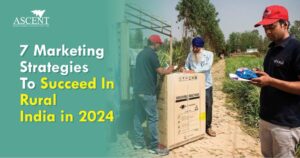How about your business reaching more potential customers, retaining existing customers, and increasing sales?
We mean that digital marketing has become one of the most effective means to communicate because it enables you to engage with them through their preferred channels. Effective communication, however, necessitates effective planning. Then there’s the Digital Marketing Plan, which serves as a big picture.
SO, WHAT IS A DIGITAL MARKETING PLAN?

A digital marketing plan describes what you intend to accomplish in a given time frame in order to meet a set of business objectives.
While developing a digital marketing strategy, keep in mind that marketing is still about communicating the usefulness of your product or service in a way that buyers can understand.
As a result, your digital marketing plan should focus on marketing methods that will help your business provide a consistent experience to your target audience.
How to Create A Digital Marketing Plan
DEFINE YOUR BRAND

Your brand is the public’s first impression of your business. Most importantly, your business and brand are inextricably linked. How can you imagine a brand definition if you don’t know what your company does?
So the very first step is to define what your business does? Then, what makes it stand out? And how does your business differ from its competitors? Also, you must clearly understand why your business is doing what it is doing and what motivates your business to start up energetically every day.
RESEARCH AND ANALYSIS

Are you aware of the current state of your business? If not, be aware that an effective digital marketing plan and strategy must include research into your own business. So, the questions you must answer are as follows:
- What products and services do you offer?
- What is the business’s differentiating feature (USP)?
- What have you done in terms of digital marketing so far?
- What kind of results did you get?
- What are people speaking up about your business on the internet?
- What is the current state of your website?
- What is the current state of the competition?
- What can you learn and understand from your competitors, and how does your brand stack up?
OBJECTIVES

The objectives will be used to determine whether or not the digital marketing strategy was successful. Your objective could be anything, such as –
- Expanding into new markets
- Raising brand awareness by introducing a new product or service
- Increasing the ROI
- Increasing market share
- Boosting profits and sales, or
- Obtaining new customers
As a result, when setting goals, keep the following in mind:
- Specific
- Measurable
- Achievable
- Realistic
- Timely
By specific, we mean that your objectives must be explicit and address the fundamental concerns of what, who, why, where, when, and how. Next, think about what KPIs you’ll use and how you’ll measure performance because without doing so, you won’t know whether you’ve met your goal or not.
Never set goals that are either too easy or too ambitious, as this will hinder your progress. Additionally, while planning, consider your previous resources and accomplishments, and finally, set a deadline for your goal to establish a time range for determining if it has been met.
BUYER PERSONAS

Are there any buyer personas you can use to describe your target market? If not, you’re not framing your strategy correctly, and there’s a good chance you’ll fail because the portrait of your ideal customer helps your business focus on the products/services it offers.
To be successful with a digital marketing plan, you must first understand who you are reaching. Using buyer personas to segment your audience and then creating buyer personas for each of those categories can assist you in determining what types of marketing will work best for you. When creating personas, your goal should be to get inside the heads of your target customers and see things from their perspectives.
Now that you’re aware, Buyer Personas are critical in digital marketing. You should also be aware that it includes demographic data such as Location, Age, Income, Job Title, Hobbies and Interests, Goals, and so on, as well as user internet activities, the current state of your customer’s relationship with your business, and user objectives and needs regarding your brand.
COMPETITIVE ANALYSIS

If you want your digital marketing efforts to succeed, you must first understand your competitors. You can use competitive analysis to learn about your competitors, assess your market share, and learn about their digital marketing strategy.
When conducting your competitive analysis, keep the following factors in mind:
- Which demographics are they targeting?
- What digital marketing channels do your competitors utilize?
- Where do they wield the most power?
- Where are they most at risk?
- What is their market position?
- What is their brand’s tone and personality?
An in-depth competitive landscape analysis will reveal how you can outperform your competitors using digital marketing.
DIGITAL MARKETING METHODS AND CONTENT PLAN

Select the appropriate digital marketing strategies to learn how to create an effective digital marketing plan. You know who you’re trying to reach and what you want to accomplish, so the next stage is to figure out how to get there. Your company has a variety of options for contacting these leads.
They are –
- Search engine optimization
- Marketing with content
- Marketing via email
- Marketing on social media
- Marketing with influencers
These are a few methods for reaching out to your target audience. However, when developing your digital marketing strategy, you must decide how you will reach out to your target audience and their Content comes to play.

An acceptable digital marketing plan should entail details on the type of Content you’ll create and how you’ll deliver it to your target audience. Different forms of content and a content calendar can be created to aid in planning. The Content should become more specialized and concentrated as the customer progresses through the conversion funnel.
SET YOUR BUDGET
The next step in developing the most appropriate digital marketing strategy for your business is calculating your budget. The budget determines how much money you have to spend on digital marketing activities and directs you to specific channels, strategies, and methods.

Once you’ve established a budget, you can break it down and allocate budgets to different channels. You’ll have to strike a balance between how much money you’re willing to spend on each channel and how much you’ll need to invest to see meaningful results. Once you know how much money you have available in your budget and how much you need to spend on each channel, you’ll be able to design a better digital marketing business plan.
TRACK YOUR PROGRESS

Then comes the juncture to assess what worked and what didn’t with your strategy, as well as where your clients are coming from. Examining the results regularly will help you figure out where your audience is. And how can you bring in most of your communication opportunities?
As a result, a systematic analysis will help you determine which aspects of your approach work best and which do not. It’s an essential step; otherwise, all of your online efforts would be futile if you didn’t track your progress.
CONCLUSION
A solid digital marketing plan has many components, so make sure you start with the right approach, implement it with the right tools, and follow the necessary procedures to launch a digital marketing campaign.
Following these eight steps for developing a digital marketing plan will put your company on the fast track to attracting more customers. And therefore, an effective plan can assist you in generating new leads and improving conversions for your business.
Written by– Kirti


















3 Responses